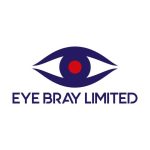We all have to change something at some point – it’s just life. One of the most essential parts of change is the visualisation element of change. Whether the change being considered is enforced, like as a result of compliance from your regulator (or a legal change), or a choice, as something isn’t going right for you, visualisation is a key element of preparing the end result.
To get a geeky bit out the way (and I’m sorry it won’t be the only one) visualising your change is part of the “contemplation” phase of phase management, well mostly anyway. I lean towards following the 6 phases of change (although there are other models available) where visualisation will also be found in the preparation phase.
The role of visualisation in change
Let’s be honest we have all heard of the phrase “start with the end in mind”. This is where is fits into, in a practical sense, how you go about change.
For change to work best, you must be able to visualise what things will look like (or feel like) at the end. Practically, you will benefit from guessing how it will feel with the “new way” being in place too. Then you can go about the rest of the phases to complete the change, the W’s * (4 or 5 it’s up to you) and the H, and it will come together and work for you.
So it doesn’t matter if you are a nursery that is going through a refurbishment project, or a business reviewing the concentration of particular activities going through a single person, missing the visualisation element can be devastating.
Visualisation may start with a feeling, but it ends in documents. Plans, costs, processes, delegation structures, and similar. Once you know how this type of documentation will be affected by this particular change you will know whether it is really feasible, or not.
Visualisation and enforced change
Is it really harder to visualise an enforced change? It probably is. However, you still need to make that change work for you. Just be warned that one of the ways it can work for you is that you walk away from that employer, business, or profession.
Some heavily regulated professions, like those regulated by the PRA and the FCA, have regular changes imposed on them. Many are small and some are huge. The smaller ones are often the restriction imposed on particular schemes, or banning them all together. These then are not so much changes on how you work, but rather, the volume of products you are able to provide.
Of more significance, perhaps, are changes pertaining to money laundering and data protection regulations. These may cause more considerable thought. However, it is often the case that a majority of such changes are expected. This reduces the visualisation required at the point of their imposition as the preliminary discussions and prior warnings of what will most likely come – sooner rather than later – allows much of the visualisation to happen early (often without even realising it is happening).
What Else Might be Worth Considering?
As further thought, if you read another article of mine called “Start with the End in Mind” https://eyebray.com/start-with-the-end-in-mind/ you see a nice paraphrased piece from a quote of Leonardo Di Vinci. It goes something like this; Great things happen when a lot of small things happen in a particular way. Without knowing the destination (visualising it), whether it’s feeling better or following an instruction, you will not know when the change is done.
* From other sources the W’s are Where, When, Why, Who, When and the H is How.
Based on my previous blogs, this one is quite light on detail. Please look through the other blogs and see if the information you want is provided. Some of what I provide is very detailed.
We would be pleased to answer your enquiry through enquiries@eyebray.com, by calling 0743211611, or why not try https://wa.me/447943211611 .
